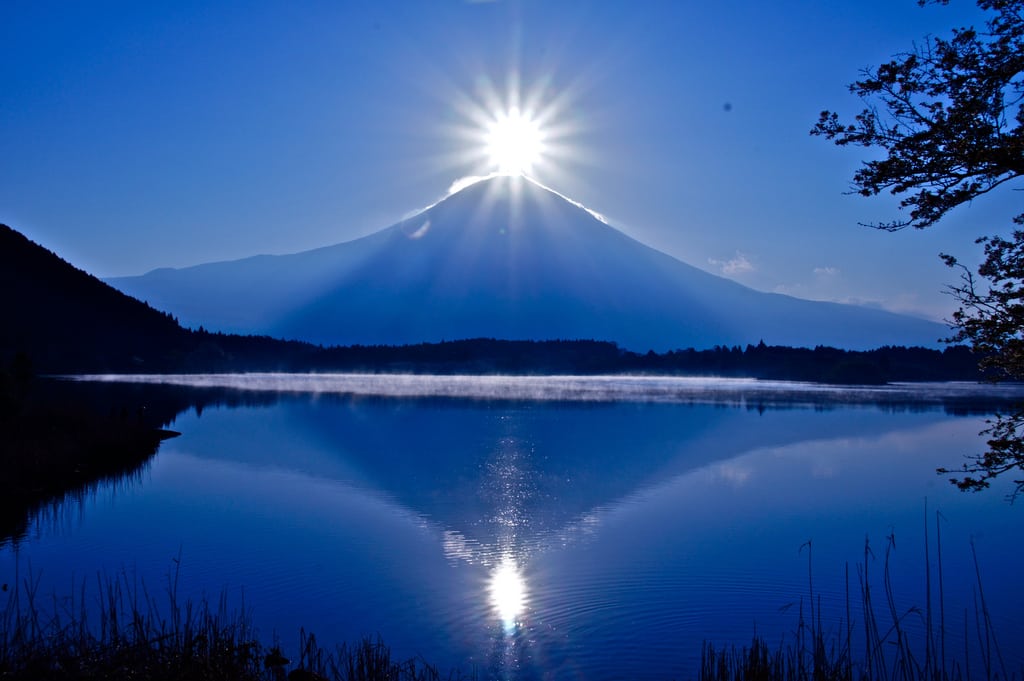Now that Mount Fuji has been inscribed on UNESCO’s list of World Cultural Heritage sites, some tourism agencies are rushing to capitalize on the historic opportunity in the hopes that the decision will spur the mountain’s already robust popularity among foreign travelers.
Hato Bus Co. announced Monday it will offer a variety of day trips catering to foreigners, adding that English-speaking guides will be used.
Starting in late July, all trips will include lunch at a resort club near Lake Kawaguchi, and eventually sightseeing from the fifth stage, which is about halfway up the volcano. One of the tours will also include fruit-picking.
Keiko Ono, a spokeswoman for Hato Bus, said it has been offering day trips from Tokyo to Mount Fuji since 2006 but only in Chinese. Saturday’s decision by the U.N. Educational, Scientific and Cultural Organization prompted the firm to expand its language service to English.
“More foreign visitors to Tokyo will be interested in taking a casual trip to Mount Fuji” given the relatively short distance between the capital and the iconic volcano, which straddles Yamanashi and Shizuoka prefectures, Ono said.
Japan Travel Bureau Corp. also announced Monday a series of day trip plans for foreigners.
English-speaking guides will also accompany other trips, such as one allowing tourists to cycle on a 25-km-long course at its base, or take a stroll while dressed as traditional Japanese pilgrims to relive their spiritual sojourns.
East Japan Railway Co. said earlier this month it will offer special 50 percent discount tickets for those who use the Chuo Line to visit the mountain.
However, while acknowledging the peak’s World Heritage designation is guaranteed to spark global interest, Yoichi Tomida, chief researcher of Shizuoka Economic Research Institute Ltd., cautioned that it might not be such a big deal after all.
For example, Tomida said the Iwami Ginzan silver mine in Shimane Prefecture, which emerged from years of obscurity in 2007 after it was added to the prestigious list, suddenly began attracting first-time visitors.
But Mount Fuji has been luring hordes of Japanese and foreign visitors for decades. It’s a good place to escape the humid summers or watch the sun rise.
“So we doubt the effect will be as visible as in the case of Iwami Ginzan, for example,” he said.
Mount Fuji’s well-established fan base has prompted local businesses and tourism agencies to improve multilingual services over the years, but now that it has been registered as a World Heritage site, the need for even greater linguistic flexibility is stronger than ever, Tomida said.
“The whole point is that this is not a ‘natural’ heritage site but a cultural thing. That means we want visitors to go beyond just marveling at the mountain’s natural beauty, and truly understand its cultural profundity,” Tomida said.
To help first-time visitors grasp these cultural values, Tomida said interpreters need to be able to not only translate original Japanese verbatim but also explain complex concepts about the iconic peak in easy to understand English. ___
![]()
The Daily Newsletter
Our daily coverage of the global travel industry. Written by editors and analysts from across Skift’s brands.
Have a confidential tip for Skift? Get in touch
Photo credit: Lake Tanuki and Mount Fuji, Japan. Roberto Maxwell / Flickr.com
